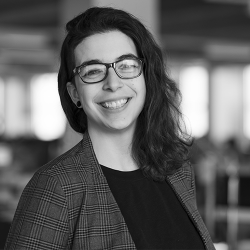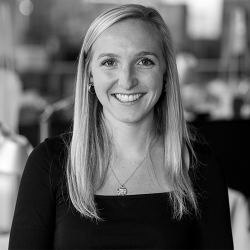6th Annual Design & Health Symposium | Designing for Neurodiversity: Creating Inclusive and Therapeutic Healthcare Spaces
Online Symposium
Presented by the Elliot Master of Healthcare Design Program at Kent State University’s College of Architecture and Environmental Design
Date: Wednesday, April 17, 2025 , 4:00 - 7:00 pm US Eastern
Registration Fee: $60 for individuals; $120 for groups (up to 3); Free to CAED faculty and students
Registration and Payment Link: https://commerce.cashnet.com/caeda
Non Kent State University Student Registration Link (Free): https://kent.qualtrics.com/jfe/form/SV_9nsiBG0zfQ550PQ
CEUs Available: AIA, EDAC
Questions? Contact Dr. Sara Bayramzadeh, Master of Healthcare Design Coordinator and Elliot Professor
The concept of neurodiversity challenges the traditional medical model by promoting an inclusive approach that values the strengths and variations of individuals with conditions such as autism, ADHD, and dyslexia. This symposium will explore how healthcare design can support neurodivergent individuals by addressing sensory needs, fostering therapeutic environments, and promoting inclusivity. Research shows that many neurological conditions come with unique abilities, such as systemizing skills in autism or visual-spatial strengths in dyslexia, which are often overlooked in standard healthcare. This symposium will examine the ambiguity around "normal" brain function and how healthcare spaces can adopt a diversity-first mindset. Emphasizing trauma-informed design and neurodiversity principles, the symposium will showcase strategies for creating sensory-sensitive settings using environmental design elements such as lighting, acoustics, and spatial organization. Our goal is to redefine healthcare environments to be more adaptive, inclusive, and supportive for all.
Learning Objectives:
- Demonstrate an understanding of neurodiversity
- Recognize the role of the design in supporting or hindering therapeutic experience for neurodivergent individuals within healthcare facilities
- Identify design solutions to help neurodivergent individuals overcome challenges in healthcare environments
- Identify the current evidence-based design practices and recommendations for inclusive healthcare facilities
SPEAKERS

Kati Peditto, PhD, EDAC: Associate | Senior Design Researcher at DLR
Bio: Dr. Kati Peditto is a design researcher and speaker specializing in neuroinclusive design. With a PhD in environmental psychology, she translates evidence into practical strategies for architects, designers, and organizations to create spaces that support neurodivergent individuals. Drawing from her own experiences as an autistic woman with ADHD, she is widely recognized for her expertise in design for mental health and neurodivergence, including features in the BBC, The Atlantic, and the Washington Post.
Title of Presentation: Design in Mind: Creating Neuroinclusive Spaces for Health & Well-Being
Presentation Abstract: How can the built environment better support the diverse ways people think, feel, and experience the world? In this lecture, Dr. Kati Peditto, a Senior Design Researcher at DLR Group, explores evidence-based design strategies for neurodivergent individuals across healthcare, education, and work environments. Kati provides actionable guidelines to create spaces that encourage autonomy, reduce stress, and promote equity. Blending empathy and science, this lecture is for any aspiring architects, designers, and engineers seeking to reimagine environments that truly meet the needs of all users.

Larissa Sattler: Perkins&Will
Bio: As a young designer Larissa Sattler was passionate about studying how spatial equity could have negative and positive effects on individuals and the public. Her research pursuits began in St. Louis with thesis work and museum exhibitions on the racial and historical legacies of urban injustice - segregation by design. Upon joining PAYETTE she launched the Spatial Equity Research Group as a citizen-led initiative to promote the design of equitable spaces within the practice. The research group has acted as a catalyst and forum for promoting design and spatial justice. She is currently continuing this work at Perkins&Will at their Boston office.

Ellie Thomas: Design at Payette
Bio: Ellie Thomas joined the research group at its pivot point to research neuro-inclusion and has championed initiatives related to the topic. Her past research efforts include how one's spatial perceptions change with dementia and cognitive decline as well as other neuroscience and architecture studies. Today, her growing expertise in healthcare design paired with passion for research on neuro-inclusive spaces has helped to excel not only the group's knowledge, but how PAYETTE strategically thinks about neuro-inclusive design within projects.
Title of Presentation: Designing for Neuro-Inclusion in Complex Buildings
Presentation Abstract: In complex building typologies such as healthcare facilities and science laboratories, designers are often tasked to design for maximum efficiency and high functionality. Moreover, stringent regulations, codes, and building systems can minimize the ability to adjust a space for an individual's preferences. Designing for neuro-inclusion, however, suggests strategies to enhance choice, flexibility, variety and proximity in the built environment.
In our practices, we aim to better understand how a neurodiverse person experiences the spaces we design and how we may design the environment to better support them. Ongoing research includes hosting interviews, sending surveys, analyzing post-occupancy evaluations, and more. This presentation will share initial findings of these efforts and the beginnings of design strategies for implementation in some of the more complex building types.

Don Lawrence, Assoc. AIA, EDAC, ICGB: Associate Vice President | Blue Cottage of CannonDesign
Title of presentation: Balancing Social Integration and Specialized Treatment: Thompson Autism and Neurodevelopmental Center
Bio: Over 25 years of experience in architectural and operational programming/planning for healthcare, educational, and research environments. Combines practical clinical experience in medical imaging with architectural studies at the University of Texas at Austin to enhance operational efficiency. Skilled in predictive analytics, strategic planning, and integrating evidence-based design into space programming. Passionate about incorporating neurodiversity into architectural planning.
Presentation Abstract: With the increasing number of children diagnosed with autism, there are many opportunities to balance social integration and specialized treatment. New research on the needs of people with autism explores sensory triggers in our overstimulated world and how they influence design challenges and solutions. For children, it's important to create areas of respite and calm amid the chaos to allow for personal choice. For parents, connections need to be made available where resources are typically limited.
The Thompson Autism and Neurodevelopmental Center is one of the few facilities tailored to the care of autistic patients and their families. It is designed to ensure that sensory experiences, transitions, lighting, stimulation spaces, signage, and artwork are best suited for people with autism. The center serves as a resource and community for the families of autistic children, who often rely on their own support systems to navigate the education system. The interventions available for a child to self-manage extend beyond the healthcare environment into education and the approach used in this design should be considered for many public facilities.
HOST & ORGANIZER

Sara Bayramzadeh, PH.D., M.ARCH : Healthcare Design Program Coordinator and Elliot Professor
Bio: Dr. Sara Bayramzadeh, Ph.D., M.Arch. is the Coordinator and Elliot Professor in the Master of Healthcare Design program at Kent State University. Dr. Bayramzadeh’s research focuses on interdisciplinary efforts to enhance healthcare outcomes through effective environmental design. She has extensive experience with complex healthcare environments such as psychiatric units, operating rooms design, and trauma room designs. Safety and efficiency are the primary healthcare outcomes she investigates. Her research also looks at opportunities to bridge academia and practice for design solutions derived from research and actively looks for ways to promote research in the design practice.